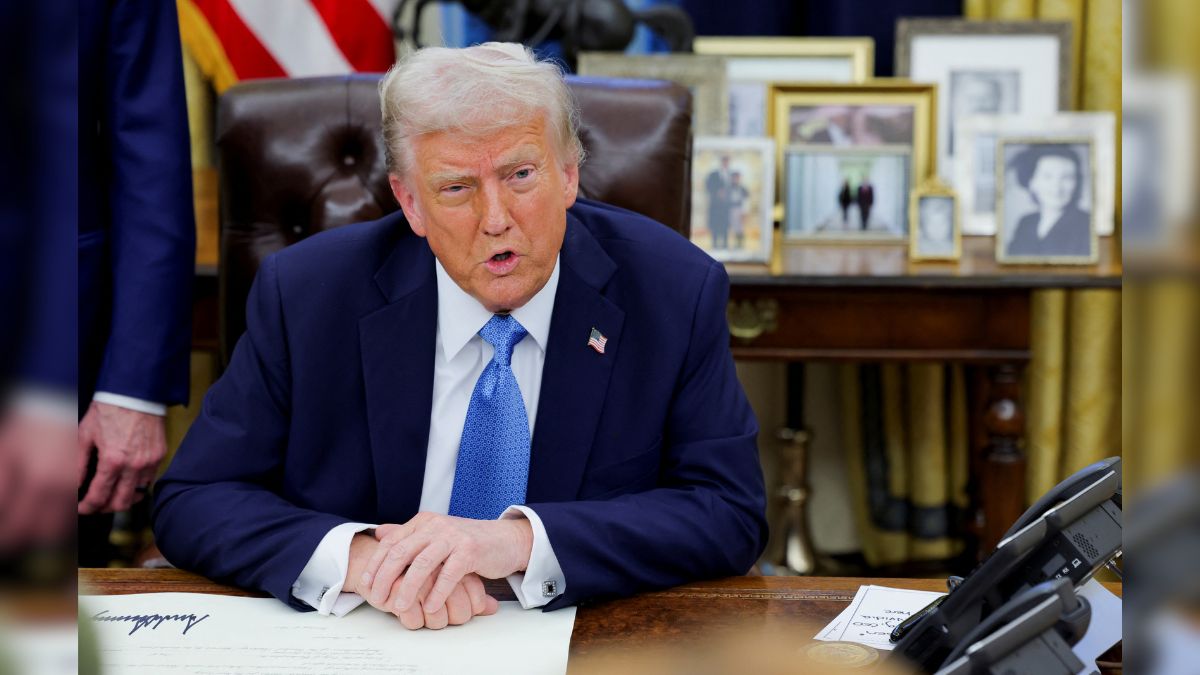United States President Donald Trump has introduced sweeping tariffs on imports from Canada, Mexico, and China, escalating trade tensions with America’s key trading partners.
The new tariffs, which took effect on Saturday, impose a 25 per cent duty on goods from Mexico and Canada, while Chinese imports face a 10 per cent levy.
These measures are expected to impact businesses, consumers, and the global economy.
What are tariffs and how do they work?
Tariffs are taxes placed on imported goods, making them more expensive for domestic buyers. The most common type, ad valorem tariffs, is calculated as a percentage of the product’s value. For example, under Trump’s latest trade policy, a 25 per cent tariff applies to imported products such as Canadian lumber or Mexican avocados.
Other types of tariffs include specific tariffs, which impose a fixed charge per unit, and tariff-rate quotas, which apply higher taxes once an import threshold is exceeded.
For instance, the Trump administration previously used tariff-rate quotas on washing machines, where the first 1.2 million imported units faced a 20 per cent duty, and any additional units were taxed at 50 per cent.
The primary purpose of tariffs is to protect domestic industries from foreign competition and generate revenue for the government. However, they also increase costs for businesses that rely on imports and often lead to higher prices for consumers.
Who pays for the tariffs?
Although Trump has claimed that foreign countries bear the cost, the reality is that US companies importing goods are responsible for paying these tariffs. Businesses such as retailers and manufacturers pay duties to US Customs and Border Protection, which then deposits the money into the federal government’s General Fund.
Many businesses, in turn, pass these costs onto consumers, potentially driving up the price of everyday goods. While some foreign manufacturers might reduce their prices to remain competitive, many US businesses may absorb part of the tariff costs, cutting into their profits.
According to estimates from financial services firm ING, if Trump follows through with all his proposed tariffs, the average American household could see an increase of up to $2,400 per year in costs due to rising prices on goods.
Which countries have been affected?
The latest round of tariffs primarily targets Mexico, Canada, and China — three of the largest trading partners of the US.
Mexico and Canada: Trump has cited illegal immigration and drug trafficking, particularly fentanyl, as key reasons for imposing these tariffs. The Canadian government has retaliated with a 25 per cent tariff on $155 billion worth of US goods, including beer, wine, and appliances.
China: While Trump’s earlier tariffs on Chinese imports focused on technology and steel, the new tariffs cover a broader range of consumer goods. China has vowed to take countermeasures , potentially reigniting tensions that marked the US-China trade war during Trump’s first term.
The immediate effect of these tariffs has been a decline in stock markets and currency fluctuations, with the Mexican peso and Canadian dollar weakening against the US dollar.
Why is Trump imposing these tariffs?
Trump argues that tariffs serve multiple purposes, including boosting US manufacturing, reducing trade deficits, and addressing issues like illegal immigration and drug trafficking.
In an October interview at the Economic Club of Chicago, he stated, “No. 1 is for protection of the companies that we have here, and the new companies that will move in because we’re going to have thousands of companies coming into this country.”
At the World Economic Forum in Davos, Switzerland, Trump encouraged companies to relocate their manufacturing to the US, saying, “Come make your product in America. But if you don’t make your product in America, which is your prerogative, then very simply you will have to pay a tariff.”
The White House cited concerns over illegal fentanyl and immigration from Mexico and Canada as justification for the tariffs.
What does this mean for the US economy?
Economists have expressed concerns that Trump’s tariff policy could lead to inflationary pressures, raising the cost of goods and services. According to Capital Economics, the US effective tariff rate would jump from 2.4 per cent to 31 per cent, a historic high that could drive inflation up to 4 per cent — well above the Federal Reserve’s 2 per cent target.
Higher inflation could, in turn, delay potential interest rate cuts by the Fed, making borrowing more expensive for consumers and businesses.
Additionally, tariffs on auto parts and manufacturing components could disrupt the supply chain, making vehicles more expensive and potentially leading to job losses in industries reliant on international trade.
Republicans have largely supported Trump’s move, while industry groups and Democrats have warned of the economic fallout. The National Foreign Trade Council has cautioned that tariffs could significantly increase prices on everything from avocados to automobiles.
Meanwhile, legal experts suggest that Trump’s use of the International Emergency Economic Powers Act and the National Emergencies Act to justify these tariffs could face legal challenges.
What next?
China’s Commerce Ministry stated that it would take “countermeasures” and challenge the tariffs at the World Trade Organisation.
Previous trade wars have shown that retaliatory tariffs can hurt US exporters, with American farmers losing billions when China imposed tariffs on soybeans and corn during Trump’s first term.
Meanwhile, trade lawyers suggest that the legality of the tariffs could be challenged in court, as Trump has invoked the International Emergency Economic Powers Act to justify the measures. Democratic lawmakers have condemned the move, calling it “a blatant abuse of executive power.”
With Trump also considering additional tariffs on steel, aluminum, semiconductor chips, and pharmaceuticals, businesses and consumers should prepare for potential economic ripple effects in the months ahead.
With Canada and Mexico preparing countermeasures and China considering legal action at the World Trade Organisation, the risk of a prolonged trade war looms large.
If history is any guide, retaliatory tariffs from these countries could hit US exports, leading to job losses in agriculture and manufacturing sectors.
With inputs from agencies
)